ciscn_2019_final_5

目录
注意
本文最后更新于 2021-03-28,文中内容可能已过时。
总结
根据本题,学习与收获有:
tcache bin的利用都不需要伪造chunk,直接修改tcache chunk的next指针即可。但是libc2.27之后的版本加入了检查。tcache bin dup,也不存在检查,当有UAF漏洞的时候,可以直接对tcache chunk多次释放。tcache chunk不会和top_chunk合并。- 题目要读仔细,对于一些奇怪的操作,可以复现一下,加快分析速度!
题目分析
checksec

没有开启PIE防护。
函数分析
main
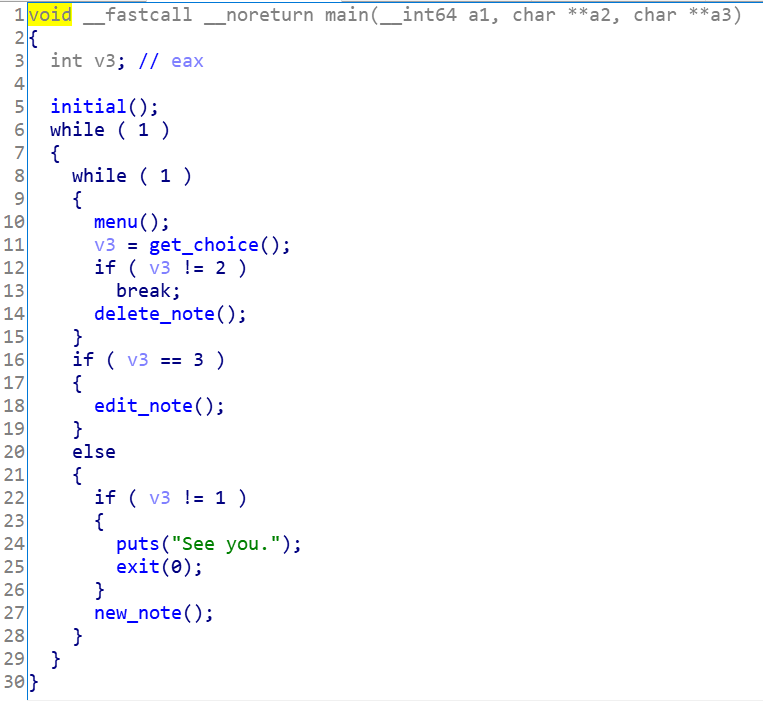
可以看出来,是个很经典的菜单题。
menu
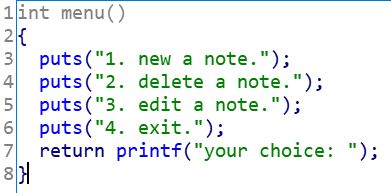
提供三个选择,接下来依次来看
new_note
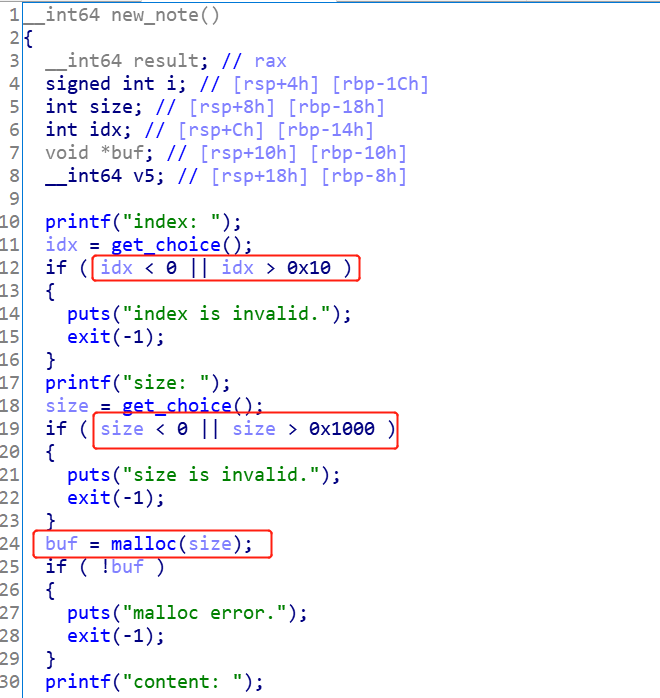
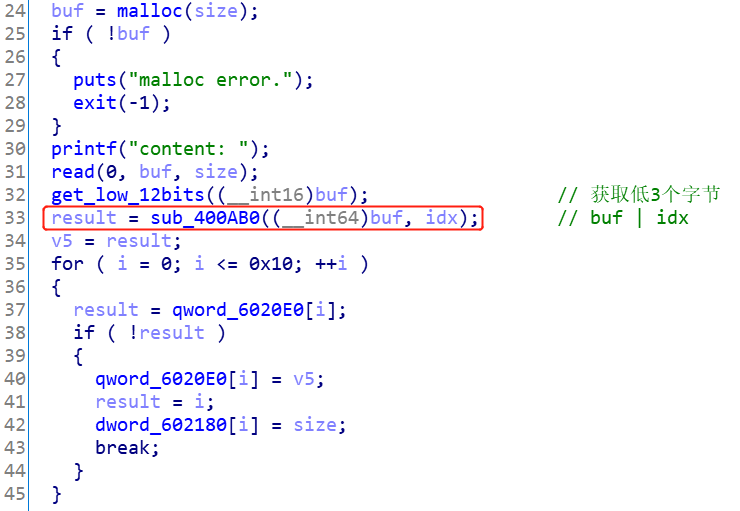
这个函数要注意以下几点:
- 输入索引的范围是
0~0x10,也就是说最多可以存储17个chunk malloc的范围为0~0x1000- 输出了每个
chunk地址的低3个字节 0x6020e0存储chunk的指针,但是存储的是输入的idx和分配到的chunk_ptr的或值- 外部输入的
idx和实际存放在0x6020e0数组的索引并不一致!!
del_note
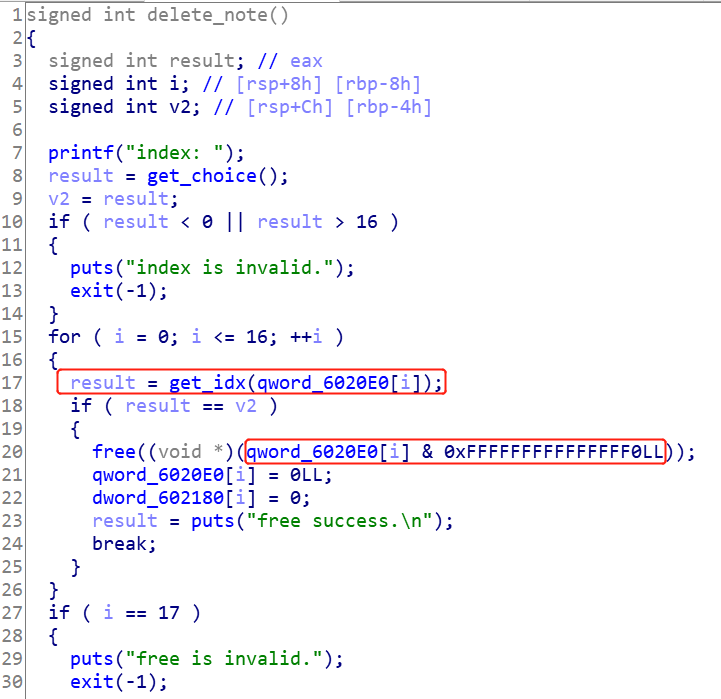

这里有两点要注意:
- 外部输入的
idx并不是会对应去删除0x6020e0[idx]处的chunk,而是遍历0x6020e0处的数组,对每一个地址ptr & 0xf取出索引,再和外部输入的idx比较,如果一样,就去删除这个地方的chunk - 找到索引后,取出的要删除的
chunk的地址是通过ptr & 0xfffffffffffffff0计算得到的
edit_note
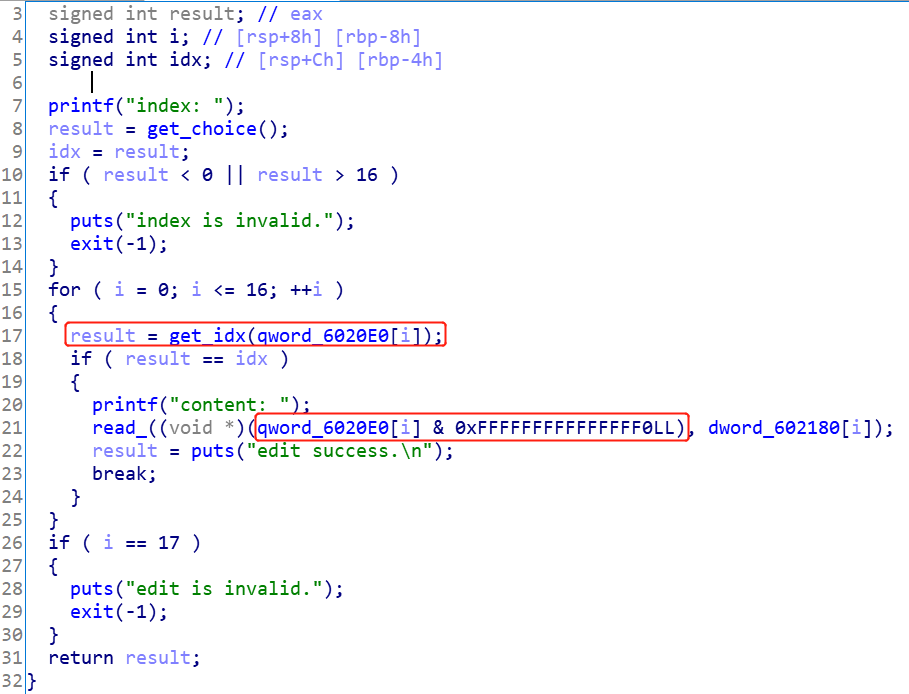
这里寻找索引和取出chunk的方式和del_note是一样的。
漏洞点
漏洞点就在于很奇怪的计算索引和计算chunk地址的方式,分析这两种计算方式,可以发现:
- 由于
chunk的地址一定是页对齐的,所以分配堆的地址的最后一位肯定是0x?0。这个地址和[0, 0xf]之间的索引取或值,对地址前面的值是不影响的,如0x20 | 0xf = 0x2f。因此,这个时候使用ptr & 0xf取索引没问题,使用ptr & 0xf0取原来的chunk指针,也没问题。 - 但是,如果给的索引是
0x10,那么就有问题了。举例说明:假设分配到的chunk_ptr地址的最后一位为0x60,那么按照new_note的存储方式,数组中最后存的地址为0x60 | 0x10 = 0x70。要取出索引,得输入0x70 & 0xf = 0x0,取出的chunk_ptr为0x70 & 0xf0 = 0x70。那么如果调用del_note或edit_note,实际上处理的地址不是0x60,而是为0x70。 - 也就是说,如果首先创建
0x10为idx的chunk,调用edit_note的时候,要输入的索引实际不能是0x10,而是0,并且编辑的地址会往高地址移动0x10个字节。这可以修改下一个chunk的pre_size和size域大小。
利用思路
步骤:
- 分配一个
chunk A,输入索引为0x10,大小为0x10 - 分配一个
chunk B,输入索引为0x1,大小为0x10 - 分配一个
chunk C,输入索引为0x2,大小为0x10 - 分配一个
chunk D,输入索引为0x3,大小为0x20 - 分配一个
chunk E,输入索引为0x4,大小为0x10,输入内容为/bin/sh\x00 - 通过
edit_note接口,输入索引0,来修改chunk B的size为0x71,这是为了把chunk C和chunk D都囊括进来,制造overlapped chunk。 - 依次释放
chunk B和chunk C和chunk D - 分配一个
chunk F,输入索引为0x1,大小为0x60,把刚刚释放那个假的chunk申请回来,并修改已经释放了的chunk C和chunk D的next指针 - 利用
tcache bin attack分别分配chunk G到free@got处和chunk H到setbuf@got处,将free@got覆盖为put@plt,将setbuf@got填为‘a’ * 8。然后调用del_note(chunk H),泄露出atoi函数的地址。 - 最后利用
edit_not接口来修改chunk G,将free@got修改为system地址,最后del_note(chunk E)获取到shell
EXP
调试过程
首先,写好函数,并且也可以定义一个数组,存储chunk地址,模拟0x6020e0数组,同时,保证变化与程序一致。
|
|
按照利用思路分配chunk,并打印数组看看:
|
|
的确是这样的:

看下堆:
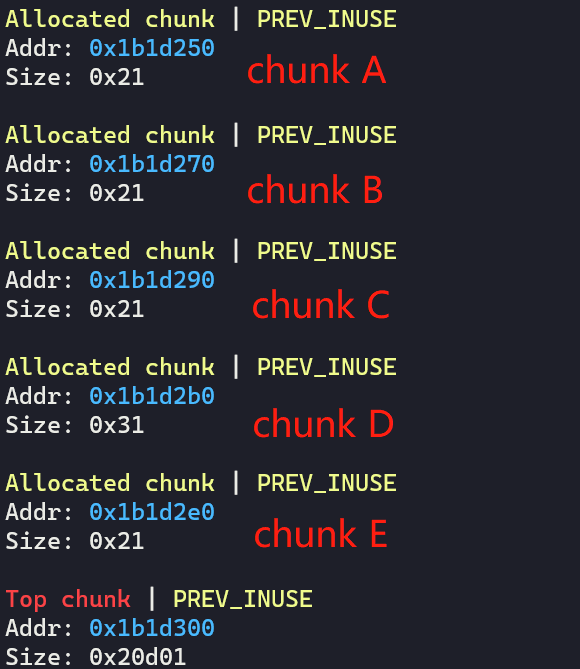
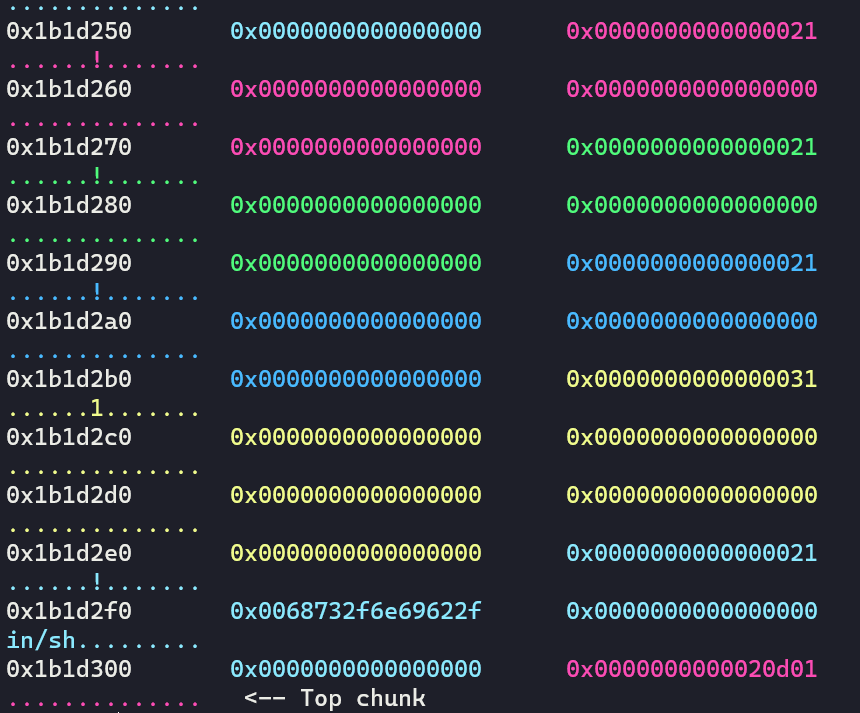
然后修改size域:
|
|
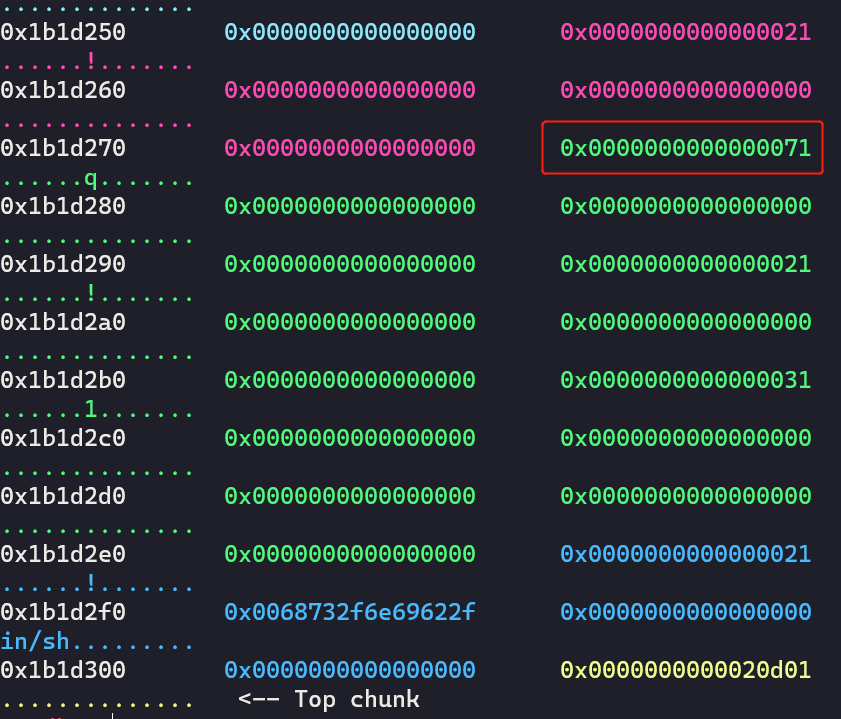
释放这个假chunk:
|
|

重新malloc回来,然后释放chunk C/D,并修改它们的next指针:
|
|
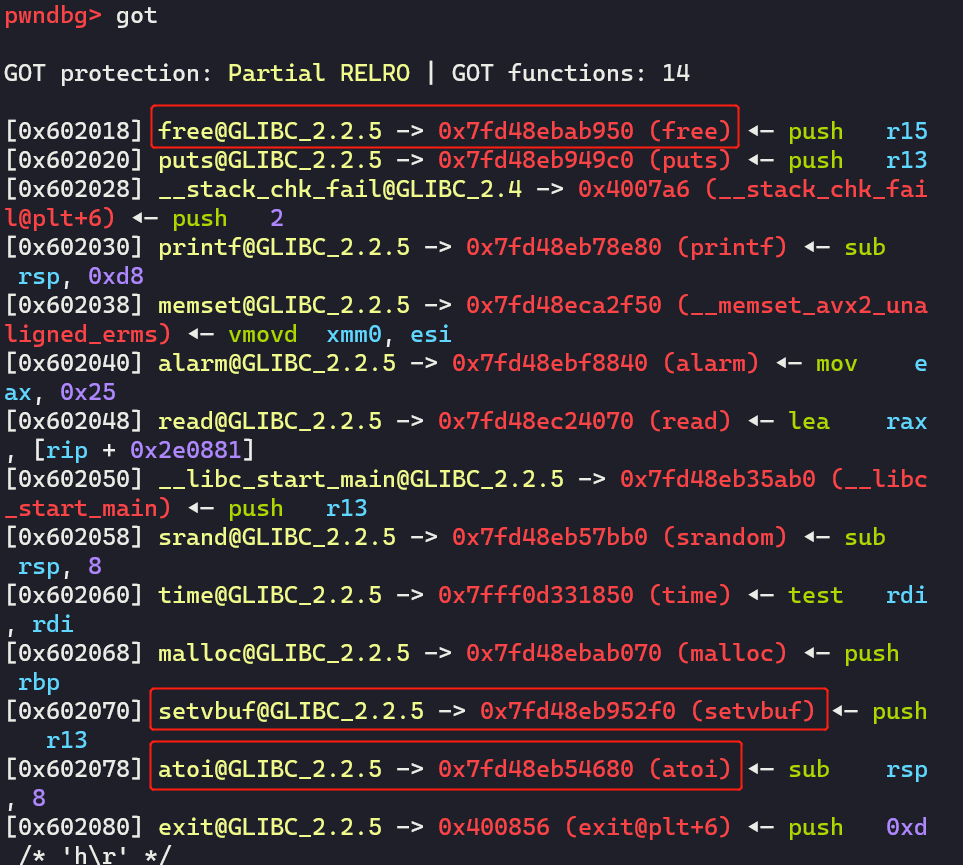
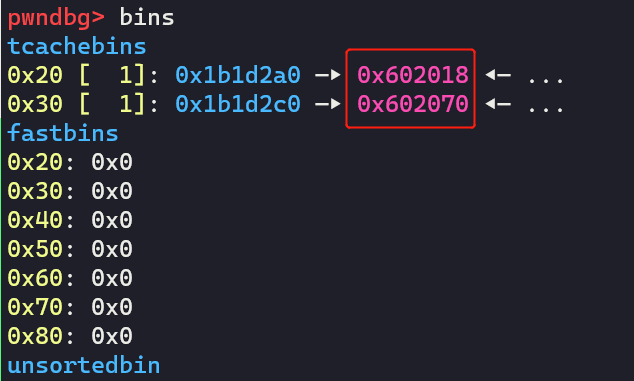
分配到free@got和setbuf@got,并修改内容:
|
|

看下数组:

然后泄露并计算system的地址,再看下数组:
|
|

注意:要访问chunk G的话,得输入idx为0xa
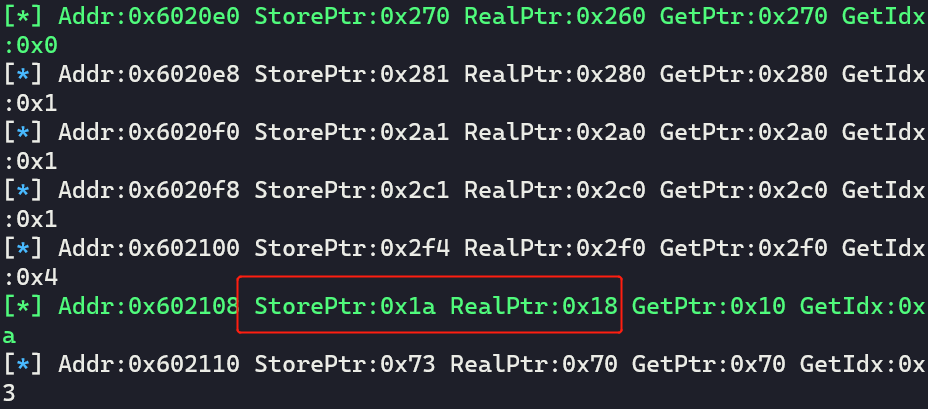
注意,这个时候0x6020110处的会被置空:

修改成功:

最后只需要free chunk E:
|
|

最终exp
|
|
Buy me a coffee~
 支付宝
支付宝
 微信
微信
